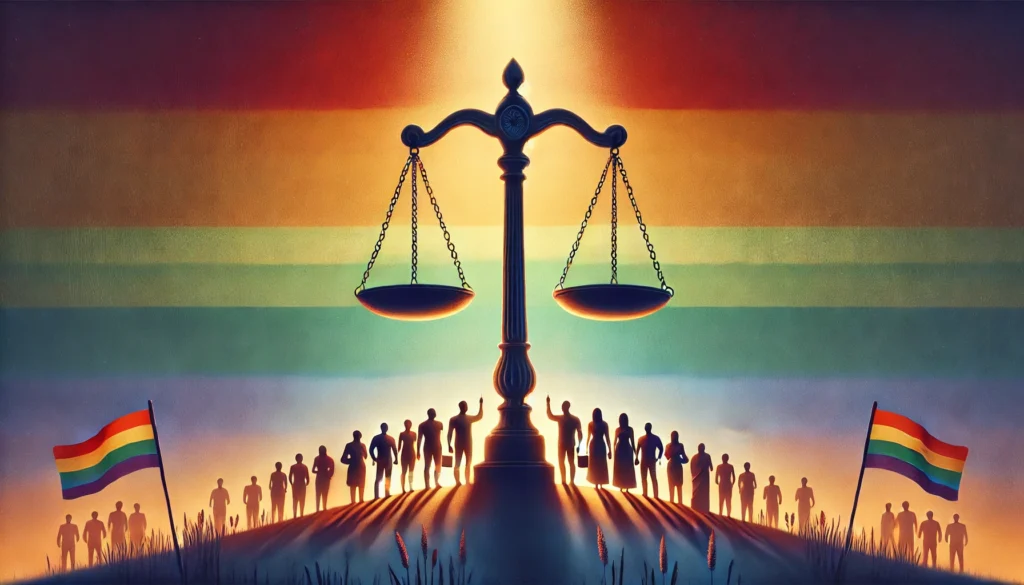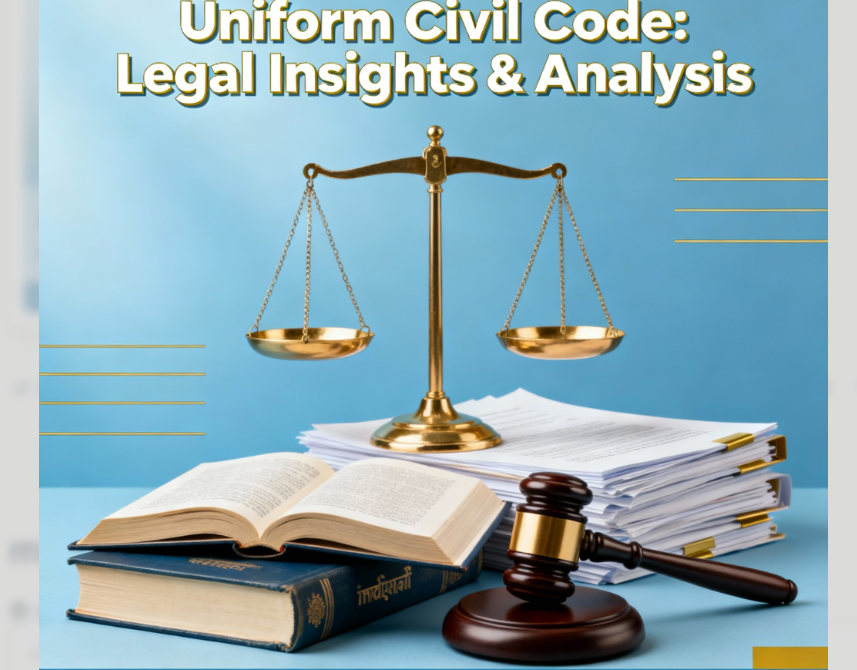Published On: October 11th 2025
Authored By: Sabari Manisha. C
Chennai Dr.Ambedkar Government Law College Pudupakkam
Abstract:
Marriage in India is not governed by a single uniform law but by a combination of religious personal laws and one secular framework under the Special Marriage Act, 1954. Hindu law treats marriage as a sacred union, Muslim law recognizes it as a civil contract, while Christian law continues to see it as sacramental but subject to statutory regulation. These different perspectives lead to distinct rules on age, consent, ceremonies, and the recognition of prohibited relationships. The differences are even sharper when it comes to divorce: the Hindu Marriage Act, 1955 and the Indian Divorce Act, 1869 set out detailed statutory grounds, whereas Muslim law provides multiple forms of dissolution, including talaq, khula, and mubarat. In recent years, courts and legislatures have attempted to soften these divergences by strengthening principles of equality, maintenance rights, and gender justice. A comparative view of these systems shows how the forum chosen, whether personal law or the Special Marriage Act , directly affects the rights and remedies of spouses, and also raises important questions about the future of personal law reform in India.
Key Words: Marriage laws, Divorce, Personal laws, Hindu law, Muslim law, Christian law, Special Marriage Act
Introduction:
In India, the law of marriage is not uniform. Instead, it depends largely on the religion of the parties. Hindus are governed by the Hindu Marriage Act, 1955, Christians by the Indian Christian Marriage Act, 1872 and the Divorce Act, 1869, while Muslims follow principles of personal law rooted in religion and partly modified by statutes like the Dissolution of Muslim Marriages Act, 1939. Alongside these, the Special Marriage Act, 1954 gives couples of any faith or of no faith at all a secular path to marriage.
This system is both unique and complicated. On one hand, it reflects India’s plural society and its commitment to protect different traditions. On the other, it often leads to different outcomes for people in similar situations, simply because their marriages fall under different laws. For example, Hindu law treats marriage as a sacred union, Muslim law views it as a contract, and Christian law keeps its sacramental nature but under statutory rules. These starting points shape everything that follows , how a marriage is celebrated, what rights and duties arise within it, and the conditions under which it may be dissolved.
Recent reforms and court judgments show that personal laws are slowly being influenced by constitutional values like equality and gender justice. The recognition of divorce by mutual consent, rulings on triple talaq, and debates about the Uniform Civil Code all point towards a gradual harmonization. Against this background, this article compares the rules of marriage and divorce across Hindu, Muslim, Christian and secular law, with the aim of showing both the similarities and the continuing differences.
Hindu Law: Marriage and Divorce
Marriage under Hindu Law
[1]The Hindu Marriage Act, 1955 consolidated and reformed Hindu personal law relating to marriage. Unlike Muslim law, where marriage is treated as a contract, Hindu law continues to emphasize its sacramental character. Traditionally, marriage was considered an indissoluble union, but the Act introduced statutory recognition of divorce for the first time.
[2]For a Hindu marriage to be valid, the following conditions must be met (Section 5, HMA):
- [3] Neither party should have a spouse living at the time of marriage.
- Both must be capable of giving valid consent, free from mental incapacity.
- The groom must be at least 21 years old and the bride 18.
- [4]The parties must not be within prohibited degrees of relationship or sapinda relationship, unless allowed by custom.
Marriage ceremonies also hold importance. Section 7 recognizes customary rites, and where saptapadi (seven steps before the sacred fire) is performed, the marriage becomes binding upon the seventh step. Registration of marriage (Section 8) is encouraged for evidentiary purposes, though omission does not invalidate a marriage.
Nullity of Marriage
Sections 11 and 12 classify marriages as void (bigamous or prohibited relationships) and voidable (fraud, coercion, impotence, or pregnancy by another man). Children born from such marriages are given legitimacy under Section 16, though property rights are limited.
Divorce under Hindu Law
[5]Section 13 of the HMA lays down grounds on which either spouse may seek divorce. These include adultery, cruelty, desertion (for two years), conversion, incurable mental disorder, venereal disease, renunciation, and presumption of death. [6]In addition, Section 13(1-A) allows divorce if there has been no resumption of cohabitation after judicial separation or restitution of conjugal rights. Wives enjoy additional grounds under Section 13(2), such as the husband’s conviction for rape or sodomy. Divorce by mutual consent was introduced in 1976 through Section 13-B, requiring one year of separation and mutual agreement.
Case Laws
[7]Shastri v. Shastri(AIR 1957 SC 176) , affirmed that Hindu marriage is a sacrament but recognized the statutory right to divorce.
Smt. Yamunabai Anantrao Adhav v. Anantrao Shivram Adhav[8] (1988) held that a second wife in a bigamous marriage is not entitled to maintenance under HMA, as the marriage itself is void.
Naveen Kohli v. Neelu Kohli (2006)[9], The Supreme Court recommended irretrievable breakdown of marriage as a ground for divorce, reflecting the modern need to move beyond fault-based grounds.
Scope and Limitations
The Hindu Marriage Act brought revolutionary change by allowing divorce and codifying matrimonial rights. However, limitations remain:
- [10]It applies only to Hindus, Buddhists, Jains, and Sikhs, not to other communities.
- Certain grounds like “irretrievable breakdown” are still not statutorily recognized despite judicial recommendations.
- Social issues like child marriages, though invalid under law, continue to persist in practice, creating enforcement challenges.
Thus, Hindu marriage law reflects a balance between ancient sacramental notions and modern statutory reforms. It stands midway upholding traditional values while accommodating constitutional principles like equality and individual liberty.
Muslim Law: Marriage and Divorce
Marriage under Muslim Law
Marriage (nikah) in Islam is not regarded as a sacrament but as a civil contract. Its primary objectives are the legalization of sexual relations, procreation of children, and the regulation of family life. However, unlike an ordinary contract, it carries moral and religious significance.
For a Muslim marriage to be valid, three essential elements are required:
- Capacity of parties – The parties must be of sound mind and must have attained puberty (presumed at 15 years, unless proven otherwise).
- Offer and acceptance (ijab and qubul) – A proposal by one party and acceptance by the other must be made in the same sitting before witnesses.
- Consent – Free consent is necessary; marriages procured by coercion or fraud are irregular.
Additional requirements include:
Dower (mehr) – a sum of money or property promised by the husband to the wife, which is her absolute right.
[11]Witnesses – At least two male witnesses, or one male and two females.
Prohibited relationships – Marriage is void if contracted within prohibited degrees of blood, affinity, or fosterage.
Classification of Marriages
Muslim jurists classify marriages into:
- Valid (sahih) – fulfilling all conditions.
- Void (batil) – absolutely unlawful, such as marrying within prohibited relationships.
- Irregular (fasid) – lacking certain conditions, e.g., absence of witnesses or marrying a fifth wife.
Divorce under Muslim Law
Muslim law recognizes several modes of dissolution:
- [12]By Husband (Talaq) – The unilateral repudiation by the husband. Traditionally it could be oral, written, or implied, but talaq-e-biddat (instant triple talaq) was declared unconstitutional in Shayara Bano v Union of India (2017). Now, divorce requires reasonable cause and attempts at reconciliation.
- By Wife (Khula) – The wife may seek release from the marriage in exchange for returning her mehr or another consideration, with the husband’s consent.
- By Mutual Consent (Mubarat) – Both spouses agree to dissolve the marriage, often without conditions.
- By Judicial Decree – Under the Dissolution of Muslim Marriages Act, 1939, a Muslim woman may seek divorce on grounds such as cruelty, desertion, failure to maintain, impotence, or disappearance of the husband.
Case Laws
Shayara Bano v Union of India[13] – Declared instant triple talaq unconstitutional, affirming that it violated women’s fundamental rights.
Fuzlunbi v K. Khader Vali [14] – Recognized that Muslim women could seek divorce under the 1939 Act on specified grounds.
Yusuf v Sowramma [15]– Kerala High Court emphasized that Muslim marriage is a contract but has sacred obligations, highlighting its dual character.
Scope and Limitations
The Muslim law of marriage provides flexibility through multiple forms of dissolution and stresses consent and financial security of the wife through mehr. However, limitations persist:
Polygamy is still legally permitted for Muslim men, subject to conditions, though rare in practice.
- Women’s right to divorce is narrower compared to men’s unless expanded through judicial decree.
- Practices like oral talaq, although restricted by courts, continue socially, creating implementation challenges.
Thus, Muslim marriage law stands at the intersection of tradition and reform. While it retains contractual roots, modern interpretations and statutory interventions are slowly aligning it with constitutional values of equality and gender justice.
Christian Law: Marriage and Divorce
Marriage under Christian Law
[16]Christian marriages in India are governed by the Indian Christian Marriage Act, 1872, which regulates the solemnization of marriages, and the Indian Divorce Act, 1869, which governs dissolution. The law applies to Christians of all denominations, though customs of individual Churches (such as Catholic or Protestant) may influence ceremonies.
For a marriage to be valid under the 1872 Act:
- Capacity of parties – Neither party should have a living spouse at the time of marriage, and both must meet the statutory age (21 years for the groom, 18 for the bride).
- Consent – Free and voluntary consent is required; marriages obtained through fraud, coercion, or unsoundness of mind are void.
- Notice and registration – Parties must give written notice to the Marriage Registrar, after which objections may be raised. Registration provides legal proof.
- Ceremonies – A Christian marriage must be solemnized by a Minister of Religion licensed under the Act or by a Marriage Registrar, in the presence of at least two witnesses.
Divorce under Christian Law
[17]The Indian Divorce Act, 1869 originally contained strict provisions, particularly against women. Men could seek divorce on grounds of adultery alone, while women had to prove adultery combined with cruelty or desertion. This gender bias was struck down in Ammini v Union of India (1995), leading to the 2001 amendment which gave equal rights to both spouses.
Currently, grounds for divorce under Section 10 include: adultery, cruelty, desertion for two years, conversion to another religion, incurable mental disorder, venereal disease, and presumption of death. Divorce by mutual consent was added through the Marriage Laws (Amendment) Act, 2001.
Judicial Separation and Nullity
Judicial separation (Section 22, Divorce Act) allows spouses to live apart without dissolving the marriage.
Nullity of marriage can be declared if consent was invalid, if a party was already married, or if prohibited relationships were involved.
Case Laws
[18]Ammini v Union of India , Struck down gender discrimination in divorce grounds under the Divorce Act, bringing equality between spouses.
Thomas v Union of India [19],affirmed that discriminatory provisions under the Divorce Act violated Articles 14 and 15 of the Constitution
Molly Joseph v George Sebastian [20](1996) held that divorce decrees granted by ecclesiastical tribunals (church courts) have no legal effect unless granted under the Divorce Act.
Scope and Limitations
Christian marriage law reflects a blend of religious sacrament and statutory control. It safeguards consent, age, and registration, ensuring legal recognition. The amendments to the Divorce Act have moved it closer to constitutional equality, particularly in giving women equal grounds for divorce.
However, certain limitations remain:
- Procedures are often lengthy and bureaucratic, especially regarding notice and registration.
- Earlier colonial influences still shape the statutes, making them outdated in parts.
- Ecclesiastical practices sometimes create confusion when they conflict with statutory requirements.
Overall, Christian law in India has gradually evolved from rigid colonial-era restrictions to a more gender-neutral and constitutionally compliant framework. Yet, the balance between religious sacrament and state regulation continues to shape its interpretation.
The Special Marriage Act, 1954
Marriage under the Special Marriage Act
[21]The Special Marriage Act was enacted to provide a civil form of marriage irrespective of religion or faith. It was designed especially for interfaith marriages or for those who do not wish to marry under personal law.
For a valid marriage under the Act (Sections 4–15):
- Capacity – Neither party should have a living spouse at the time of marriage; both must be of sound mind and capable of consent.
- Age – The male must be at least 21 years and the female at least 18 years.
- Prohibited degrees – Parties must not be within prohibited degrees of relationship unless permitted by custom.
- Notice – Parties must give written notice of intended marriage to the Marriage Officer, who publishes it and allows objections within 30 days.
- Solemnization – Marriage is solemnized in the presence of the Marriage Officer and three witnesses, followed by signing of the marriage certificate.
Divorce under the Special Marriage Act
[22]The Act provides detailed grounds for divorce (Section 27), which are broadly similar to those under the Hindu Marriage Act. Grounds include adultery, desertion, cruelty, incurable mental disorder, venereal disease, renunciation, and presumption of death. Both husband and wife enjoy equal rights. Divorce by mutual consent is recognized under Section 28.
The Act also recognizes judicial separation (Section 23) and nullity of marriage (Section 24) on grounds such as lack of valid consent, existing spouse, or violation of conditions in Section 4.
Case Laws
Lily Thomas v Union of India[23] ,held that conversion of religion solely to dissolve a marriage under the SMA would not automatically end the marital tie.
Sarla Mudgal v Union of India[24] ,addressed the issue of conversion and bigamy, emphasizing the need for a Uniform Civil Code under Article 44.
Seema v Ashwani Kumar[25] ,Directed compulsory registration of all marriages, including those under SMA, to prevent disputes.
Scope and Significance
The Special Marriage Act provides a secular space for marriage, protecting individuals from religious restrictions. It ensures equality between spouses, allows interfaith and inter-caste marriages, and offers remedies like divorce by mutual consent that were absent in many personal laws until reforms were introduced.
Limitations
The requirement of a 30-day public notice often exposes couples to social pressure, harassment, or even violence, especially in interfaith marriages.
Procedural formalities make it more cumbersome compared to personal laws.
Although gender-neutral in theory, societal barriers often hinder couples from accessing its protections fully.
In essence, the Special Marriage Act represents India’s attempt at a uniform civil marriage framework. It provides equal rights and remedies, but procedural hurdles continue to limit its effectiveness as a truly neutral alternative to personal laws.
Conclusion:
India’s laws on marriage and divorce are not uniform. Hindus, Muslims, and Christians follow their own rules, while the Special Marriage Act gives a secular choice. This mix shows the country’s respect for tradition but also creates differences in practice.
Courts have played an important role in removing unfairness, especially on gender issues. Progress is slow but visible. Family law in India is still changing, moving step by step toward equality while holding on to diversity.
References:
[1] The Hindu Marriage Act, 1955 (India).
[2] Valid, Void, and Voidable Marriages Under the Hindu Marriage Act, 1955’ (Century Law Firm, Blog) https://www.centurylawfirm.in/blog/valid-void-and-voidable-marriages-under-hma-1955 accessed 16 August 2025.
[3] Smt. Bharti and Another v State of U.P. and 4 Others (22 October 2014) Allahabad HC https://indiankanoon.org/doc/169041434 accessed 16 August 2025.
[4] Juris Centre, ‘Sapinda Marriage: A Complete Overview’ (14 March 2024) https://juriscentre.com/2024/03/14/sapinda-marriage-a-complete-overview accessed 16 August 2025.
[5] What is section 13 A & 13 B according to Hindu marriage in India?’ (Quora, 8 September 2020) https://www.quora.com/What-is-section-13-A-13-B-according-to-Hindu-marriage-in-India accessed 16 August 2025.
[6] ‘Section 13 – Hindu Marriage Act – Divorce’ (ApniLaw, 2 June 2024) https://www.apnilaw.com/bare-act/hindu-marriage-act/section-13-hindu-marriage-act-divorce accessed 16 August 2025.
[7] Yash Sharma, ‘Hindu Marriage is a Contract or a Religious Sacrament’ (International Journal of Creative Research Thoughts, 2022) https://ijcrt.org/papers/IJCRT2201047.pdf accessed 16 August 2025.
[8] Smt Yamunabai Anantrao Adhav v Ranantrao Shivram Adhav and Anr AIR 1988 SC 644 (SC).
[9] Naveen Kohli v Neelu Kohli AIR 2006 SC 1675 (SC).
[10] US Department of State, India 2012 International Religious Freedom Report (2012) https://2009-2017.state.gov/documents/organization/208640.pdf accessed 16 August 2025.
[11] ‘UNIT-2 | Marriage and Divorce’ (Scribd, 2024) https://www.scribd.com/document/802171836/UNIT-2 accessed 18 August 2025.
[12] ‘Divorce | Muslim Sexual Ethics’ (Brandeis University) https://www.brandeis.edu/projects/fse/muslim/divorce.html accessed 18 August 2025.
[13] Shayara Bano v Union of India and Ors AIR 2017 SC 4609 (SC).
[14] Fuzlunbi v K Khader Vali and Anr AIR 1980 SC 1730 (SC).
[15] A Yousuf Rawther v Sowramma AIR 1971 Ker 261 (Ker HC).
[16] The Indian Christian Marriage Act, 1872 (15 of 1872) https://ncwapps.nic.in/acts/TheIndianChristianMarriageAct1872-15of1872.pdf accessed 19 August 2025.
[17] Madhu Kishwar, ‘Reforms As If Women Mattered’ (India Together, Manushi Issue 119) https://indiatogether.org/manushi/issue119/reforms.htm accessed 20 August 2025.
[18] Ammini EJ and Ors v Union of India and Ors AIR 1995 Ker 252 (Ker HC).
[19] Saumya Ann Thomas v Union of India (Law Cornell, Gender Justice Resource) https://www.law.cornell.edu/gender-justice/resource/saumya_ann_thomas_v_union_of_india accessed 19 August 2025.
[20] Molly Joseph @ Nish v George Sebastian @ Joy AIR 1997 SC 109 (SC).
[21] ‘Special Marriage Act, 1954’ (Wikipedia) https://en.wikipedia.org/wiki/Special_Marriage_Act,_1954 accessed 19 August 2025.
[22] ‘Grounds of Divorce in India | Legal Provisions Explained’ (Rest The Case, 12 February 2025) https://restthecase.com/knowledge-bank/divorce-legal-guide/grounds-of-divorce-in-india accessed 19 August 2025.
[23] Lily Thomas v Union of India and Ors 2000 (2) ALD (Cri) 686 (SC).
[24] Smt Sarla Mudgal, President, Kalyani v Union of India and Ors AIR 1995 SC 1531 (SC).
[25] Smt Seema v Ashwani Kumar AIR 2006 SC 1158 (SC).




